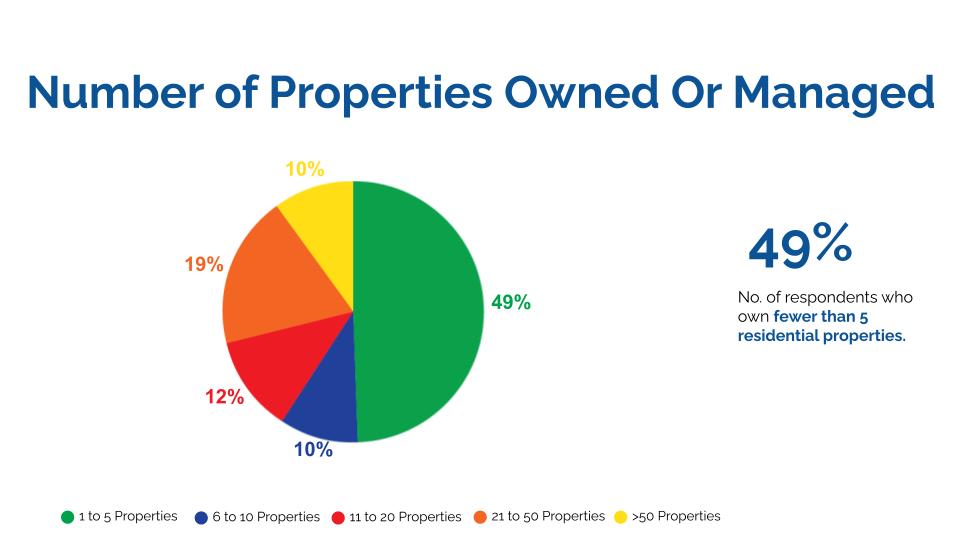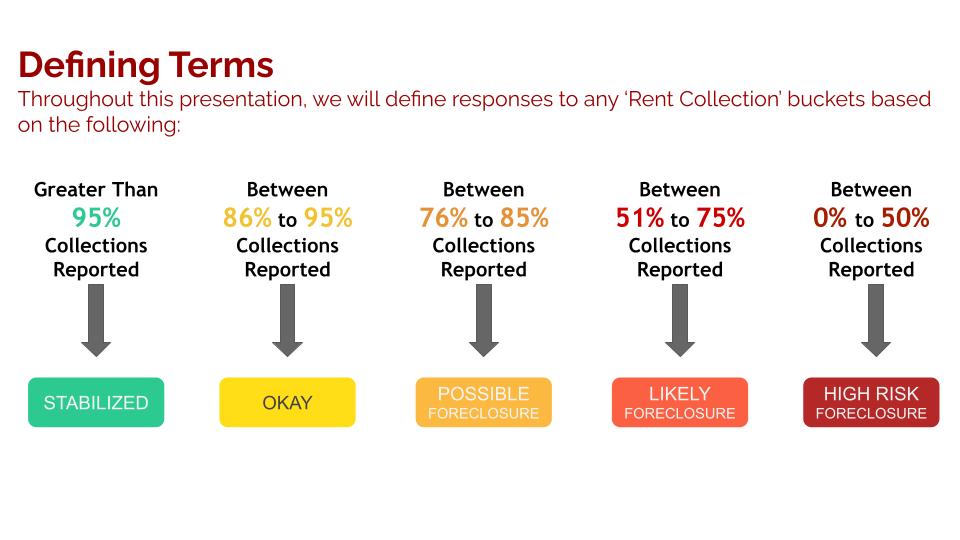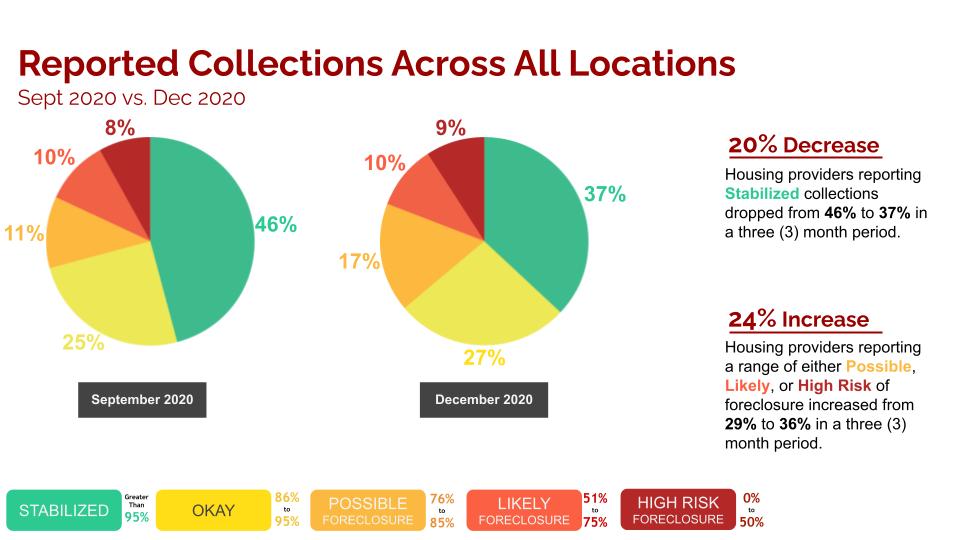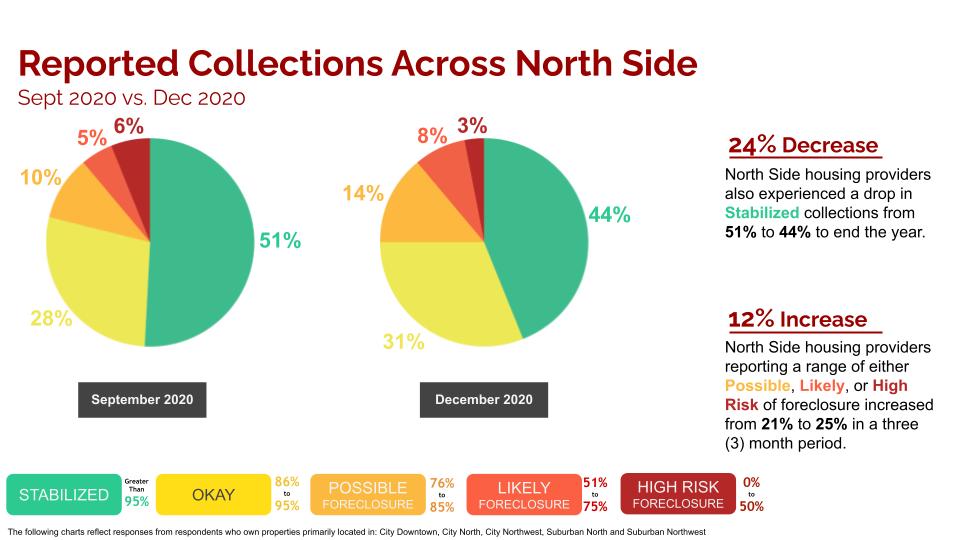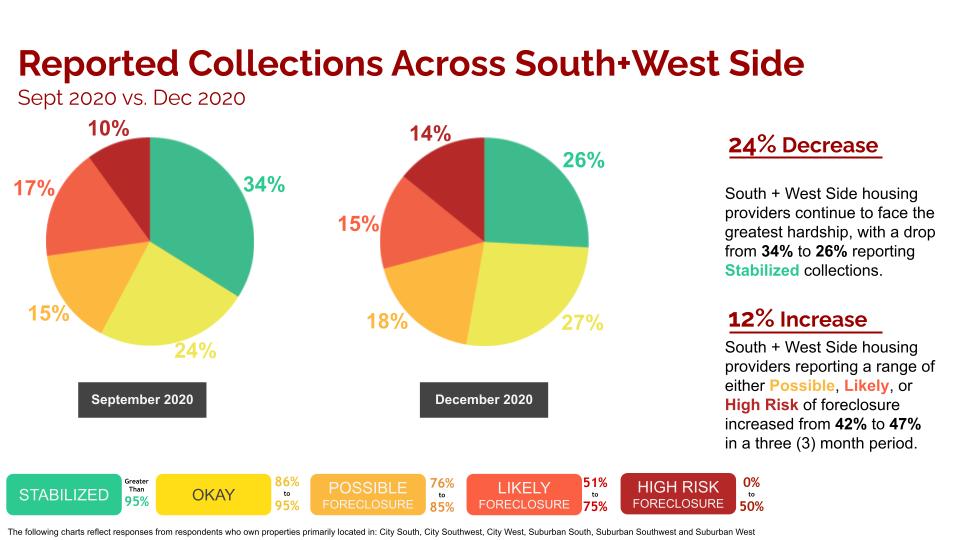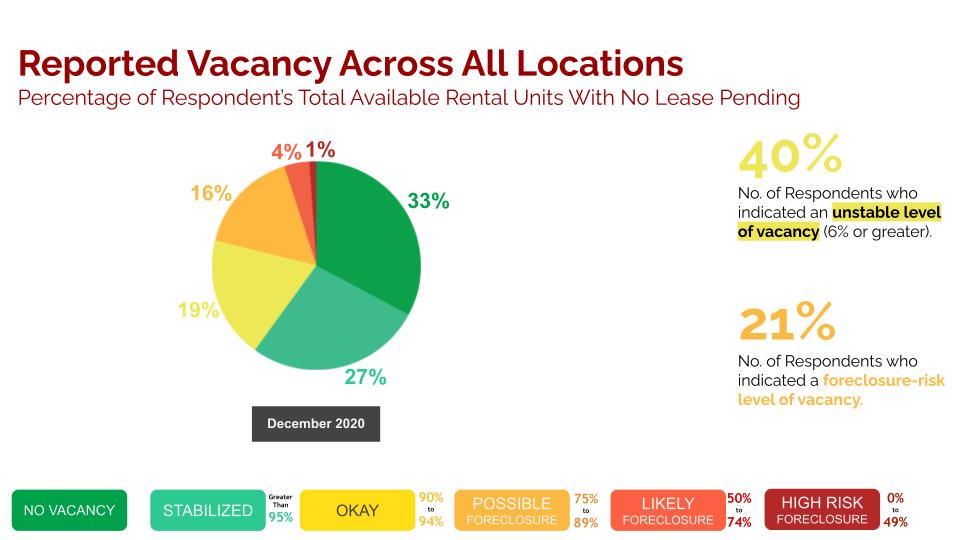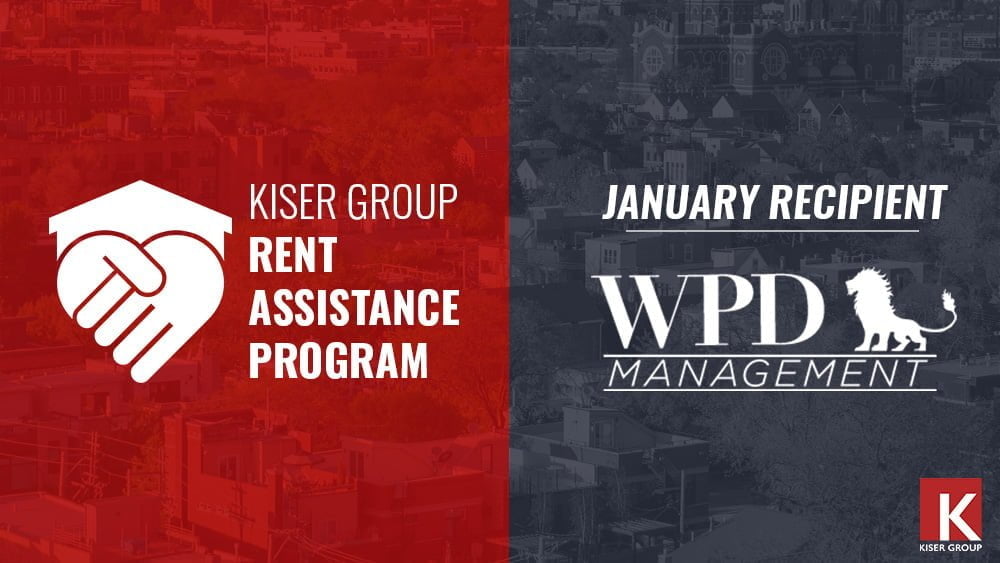02.11.21
What is happening in Chicago’s mid-market multifamily market? – NBOA’s December Survey
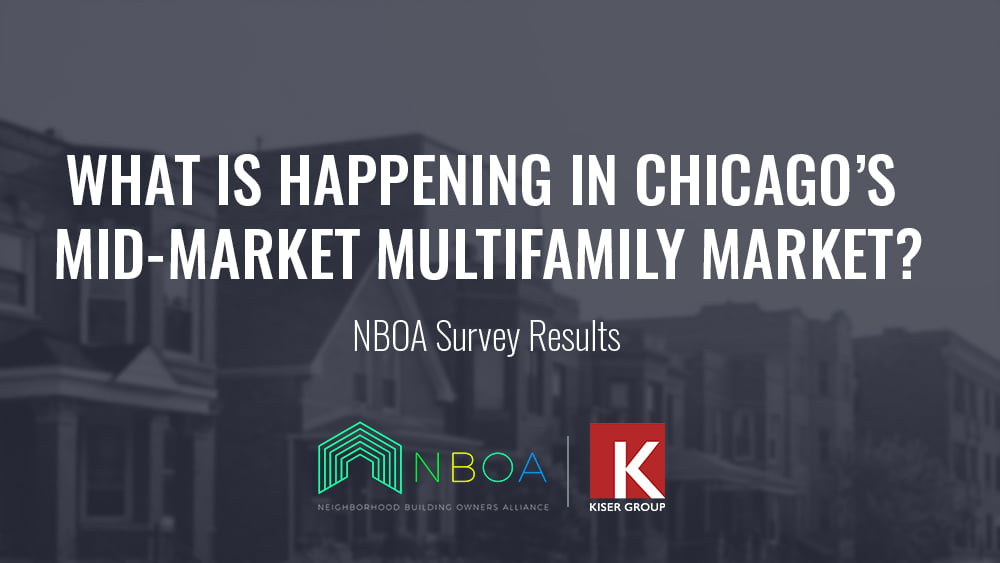
In late December 2020, Kiser Group partnered with the Neighborhood Building Owners Alliance (NBOA) to produce and distribute a survey for Chicagoland multifamily owners. The survey questions focus mainly on collections and occupancy. Nearly 400 Chicagoland housing providers completed the survey, yielding data on more than 68,000 housing units throughout the city and suburbs. Most of the data is from smaller landlords and owners, as nearly half of the survey respondents own five or fewer apartment properties.
For purposes of presenting the collections data, we assigned risk categories related to the landlord’s ability to pay a mortgage based on the percentage of scheduled rent collected. By color-coding these categories, the visualization of the survey results becomes much more intuitive. Below is a chart describing these categories.
The results of the survey are visualized in the charts below. Most importantly, we were able to compare the data from the December 2020 survey to data previously collected in September 2020 so that all changes could be measured, resulting in trend analysis. The primary takeaways from the survey are described in the following charts and narratives. The data is sobering, and some of the trends are alarming.
OVERALL CHICAGOLAND RENT COLLECTIONS
Only 37% of property owners reported collections at 95% or higher, which is considered Stabilized operation (shown in green). This category decreased 20% from September to December in 2020. Similarly disturbing, look at the categories of lower collection. The categories properties facing Possible, Likely or High-Risk Foreclosure (shown in orange/red) increased by 24%
We analyzed the same tranches described above for urban geographies below.
CITY NORTH RENT COLLECTIONS
Collections for North Side housing providers resulted in a 24% decrease in Stabilized operations between September and December 2020 and a 12% increase in high-risk operations.
CITY SOUTH & WEST RENT COLLECTIONS
The trends in these areas matched exactly with the north side, with properties considered Stabilized dropping by 24% and high risk increasing by 12%; however, unlike the north side, the overall Stabilized category is only 26% of the market and troubled, high-risk categories are a combined 72% of the market.
CHICAGOLAND VACANCY
In addition to collections, the survey also examined multifamily vacancy. Vacancy is defined as available rental units with no lease pending. 40% of housing providers indicated an unstable level of vacancy (6% or greater), with 21% indicating a foreclosure-risk level of vacancy.
2020 REVENUE LOSS
In the survey, we also asked about the percentage of uncollected rent for the entire year of 2020. The results show that 23% of respondents indicated an economic loss of 15% or greater for 2020.
2021 IMPACT OF REVENUE LOSS
We determined the IMPACT of the lost revenue from 2020 on property owners’ operations for 2021.
- 66% of housing providers will make fewer capital improvements
- 50% will reduce repairs & maintenance budgets
- 26% will not be able to pay taxes or mortgages in full
WHAT TO MAKE OF ALL OF THIS?
There are two questions that come from the sobering data and alarming trends of this survey: 1. The trends will continue, and the market will get worse, or 2. We have hit a low point and we will either stabilize here or begin to recover. The optimist in me wants to go with number 2 and believe the market has hit bottom. If vaccination rollout is effective and stimulus is implemented, the collection data should begin improving; however, we are far from being out of the woods – especially when you consider the timeline of eviction moratoriums. We won’t truly know where we’re headed until more time has passed and more survey data is analyzed. Please plan to help the NBOA by returning the next survey late in the 1st quarter of 2021.
Thank you to all of our clients and multifamily owners who responded to this survey. Stay in touch with your Kiser Group Advisor for rapidly changing market-area dynamics. We remain committed to your success and are available for whatever you need.
